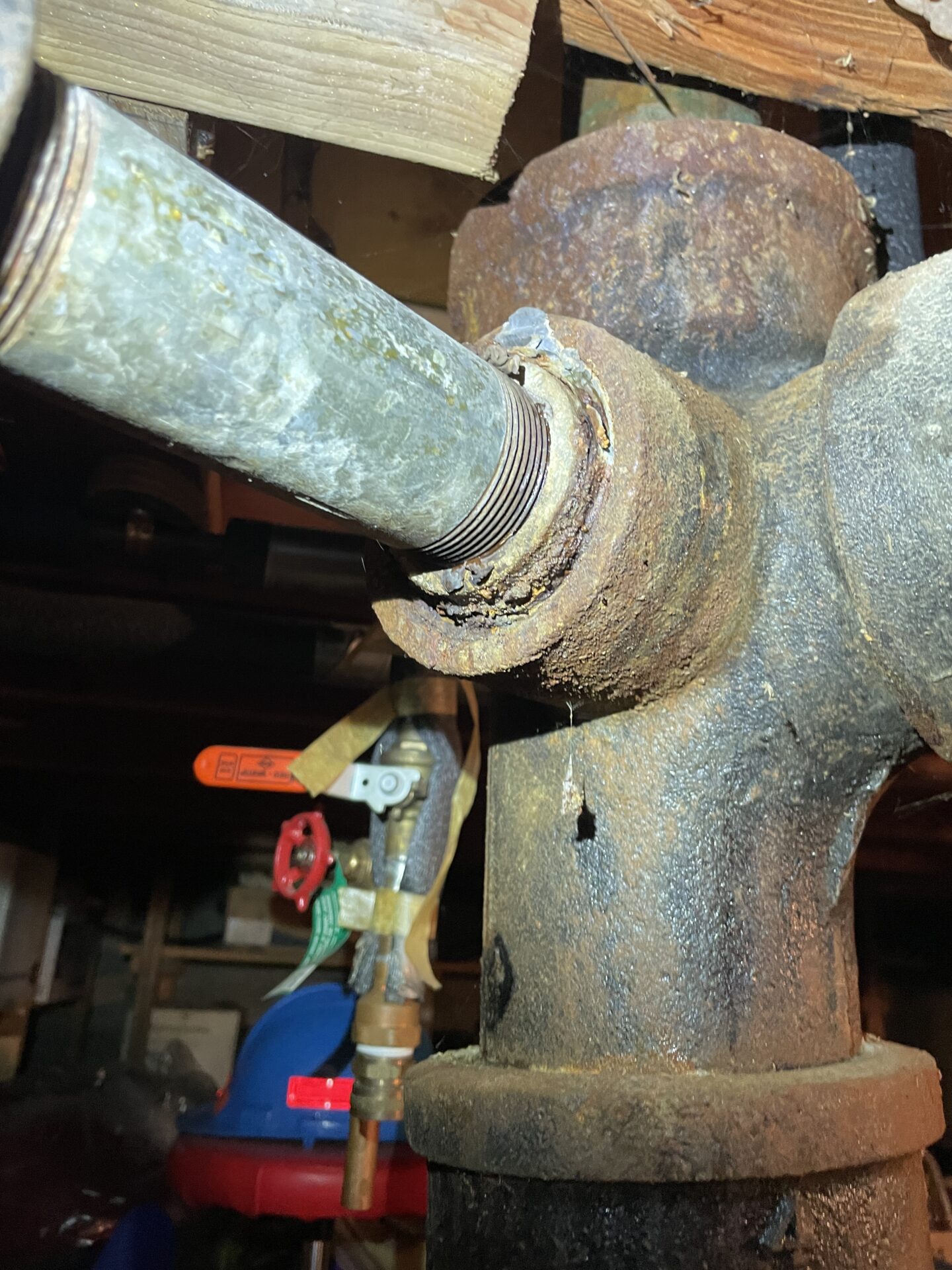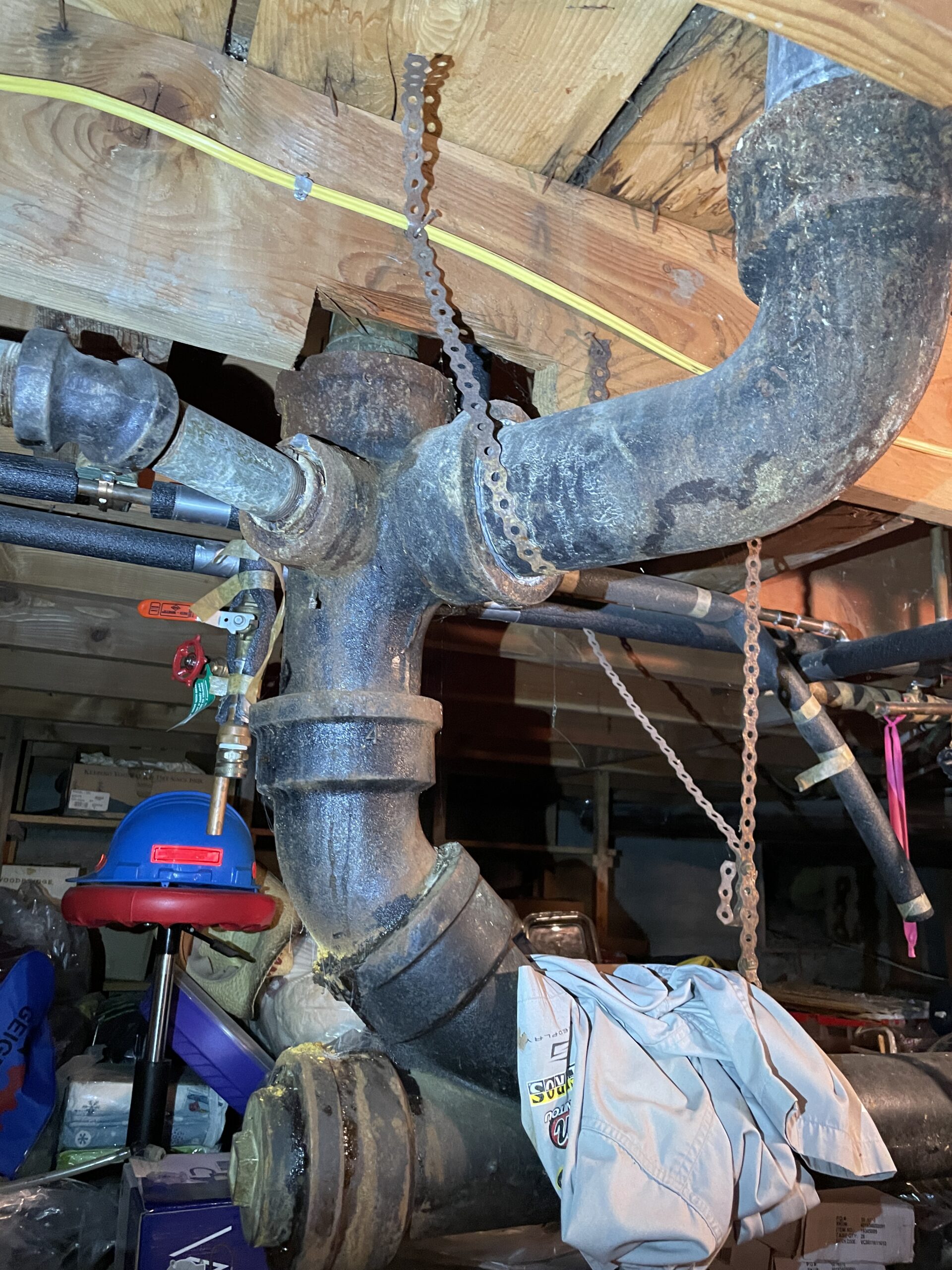Are you buying an older home with cast iron drain lines? Here’s what you need to know.
- Cast iron drains typically last between 50-100 years but can corrode from the inside and be damaged by poor support or moving structures.
- Many homes built from 1900-1960 still have their original cast iron drains.
- A sewer scope inspection can assess the condition of concealed sections of the main sewer line.
- If a cast iron drain has reached the end of its life span, replacement is usually necessary which can be costly.
- Cast iron drains are a reliable and durable material for carrying wastewater away from homes.


Cast iron drains have been a crucial element of residential construction for over a century. These materials replaced clay and lead pipes which where used prior to cast iron. Cast iron was an innovative solution that could withstand the weight of the earth and the pressure of water. This is why cast iron was the standard for new constructions in the early 1900s. Cast iron drains are easily identified, look for black drain pipes with a bulge where two pipes connect. You can look under plumbing fixtures or it may be visible in the basement or crawlspace.
When inspecting an older home with cast iron drains, it’s important to consider the age of the system. The typical life expectancy ranges from 50 to 100 years, depending on the conditions around them. Wet or damp crawl spaces and cellars can significantly reduce the longevity of cast iron plumbing. Over time, this type of plumbing can corrode from the inside out, leading to sewer leaks. Additionally, because of the weight of cast iron, it can be subject to settlement issues from poor support or moving structures. These conditions can damage the piping and cause poor sloping drain pipes.
What are the issues and what can I do?
Many homes built from 1900 to 1960 still have their original cast iron drains. Some in good shape, but most showing signs of age and wear. Often we see much of the interior cast iron drains at plumbing fixtures have been updated to modern ABS drain materials due to renovation works. In many cases the cast iron is left in place in walls, crawl spaces or cellars. The sections of cast iron drain that can’t be seen can pose a problem as they cannot be assessed a visual inspection.
The portion of drain plumbing from the crawlspace or foundation wall to the street is not visible during a home inspection. It’s recommended to have a sewer scope completed to assess the condition of this main sewer line. This information is crucial for potential home buyers due to the high costs of main sewer line replacement. This usually involves excavation and replacement of the original cast iron material. Some companies offer cast iron relining as a repair method that allows the original piping to stay in place. It’s important to note that pipe relining won’t fix improperly installed pipes, broken lines, or offset joints.
When cast iron drains have reached the end of its useful life span, you may notice bad odours or sewer leaks. You may experience poor drainage due to reduced inner diameter. In such cases, replacement is usually the answer. If you’re looking to purchase an older home, it’s always a good idea to have it inspected by a qualified home inspector who can make you aware of these kinds of issues. Similarly, if you live in an older home and are concerned about the condition of your cast iron piping, it’s recommended that you speak to a licensed plumbing contractor to help you determine if replacement would be recommended.
If your buying a home in the North Okanagan or Shuswap give the pro’s at Argos Home Inspection a call. Check out our services. We can help you assess the overall condition of your new home and provide you with a detailed digital home inspection report.


Leave a Reply